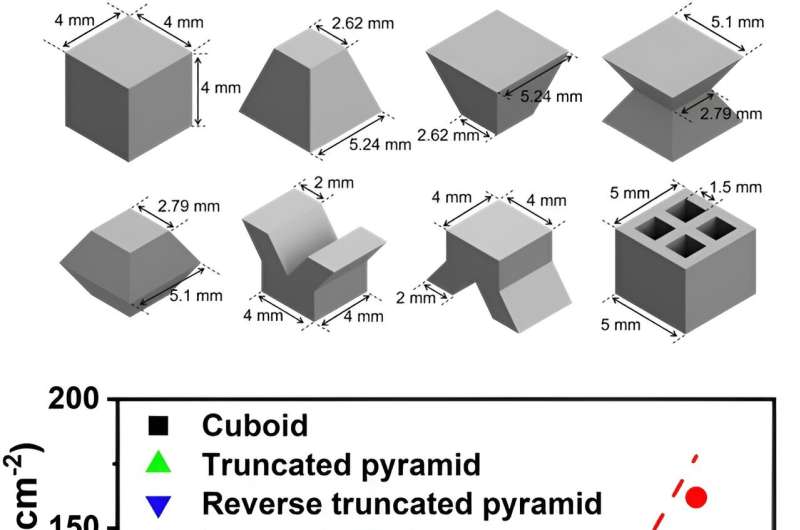July 29, 2024 feature
This article has been reviewed according to Science X's editorial process and policies. Editors have highlighted the following attributes while ensuring the content's credibility:
fact-checked
peer-reviewed publication
trusted source
proofread
A strategy to design better materials for thermoelectric power generation

In recent years, engineers and scientists worldwide have been working on new technologies for generating electricity from renewable energy sources, including photovoltaics (PVs), wind turbines and hydro-power generators. An alternative solution for mitigating the impact of climate change could be to convert the excess or waste heat generated by industries, households and hot natural environments into electricity.
This approach, known as thermoelectric power generation, relies on the use of materials with valuable thermoelectric properties. Specifically, when these materials are exposed to particularly high temperatures on one side and colder ones on the other, electrons within them start to flow from the hot side to the cooler one, which generates electrical potential
While recent works have identified some promising thermoelectric materials, the module performance is unsatisfactory due to the challenges associated with designing and fabricating optimum module structures. This significantly limits their potential real-world integration in thermoelectric modules.
Researchers at Pohang University of Science and Technology, the George Washington University and other institutes recently introduced a new strategy for designing thermoelectric materials based on copper selenide (Cu2Se).
This strategy, outlined in a paper published in Nature Energy, allowed them to design promising materials for high-power generation using techniques that could be easier to reproduce on a large scale.
"Traditional thermoelectric devices consist of p- and n-type semiconductor legs, cuboid in shape, arranged in a thermocouple configuration," Jae Sung Son, co-author of the paper, told Tech Xplore. "In these devices, the design of these legs, in terms of length and aspect ratio, is crucial for optimizing the thermal and electrical resistances to maximize power generation.
"In this context, non-cuboid three-dimensional (3D) geometries could offer additional level of control over thermal and electrical transport, potentially enhancing device performance beyond what cuboid legs can achieve."
In 2020, the research team led by Prof. Saniya LeBlanc at the George Washington University published a paper exploring the leg influence of the semiconductor legs used on the thermoelectric performance of thermoelectric power generators, via a series of simulations. But the potential of non-cuboid legs had yet to be assessed in experimental settings.
"Our group has been working on 3D printing of thermoelectric materials and devices that would allow us to realize the complex geometry of thermoelectric materials that can't be achieved by traditional manufacturing processes and investigate their impact on power generation performances," Son explained.
As part of their study, Son and his colleagues used 3D finite element model simulations to design non-cuboid geometries for the semiconductor legs. They then fabricated these geometric designs using 3D printing techniques and experimentally assessed their performance.
"We chose Cu2Se as a model material, due to its high material efficiency at high temperatures," Son said. "We conducted numerical simulations on eight different geometries, both cuboid and non-cuboids, to evaluate power generation under various working conditions.
"The 3D printing of Cu2Se particle-based colloid inks, tailored by the addition of extra Se82- polyanions enabled us to create the designed geometries of Cu2Se and to comparatively evaluate their power generation performances in a single-leg device."
The experiments carried out by this team of researchers yielded interesting results, highlighting the potential of some non-cubic legs over others. Specifically, the team observed that legs with an hourglass-shaped geometry attained the highest power generation, both in terms of output power and efficiency.
"This is obviously the first demonstration showing the impact of 3D geometry," Son said. "We also found that controlled liquid-phase sintering allowed the defect formation of high-density stacking faults and the resulting dislocations. These defects reduced the thermal conductivity of Cu2Se and consequently enhanced the ZT values up to 2.0."
The recent study by Son and his colleagues confirms that the 3D geometry of thermoelectric materials has a significant impact on the electrical current they can generate. While they specifically used their strategy to design Cu2Se-based materials, in the future it could be applied to other types of thermoelectric materials, allowing researchers to boost the performance of thermoelectric power generators without changing their intrinsic properties.
"In our upcoming studies, we will be applying non-cuboid geometries to different thermoelectric systems, such as segmented devices and Peltier cooling modules," Son added. "Moreover, integrating structural design tools with thermoelectrics could further enhance device performance and durability."
More information: Seungjun Choo et al, Geometric design of Cu2Se-based thermoelectric materials for enhancing power generation, Nature Energy (2024). DOI: 10.1038/s41560-024-01589-5
© 2024 Science X Network


















